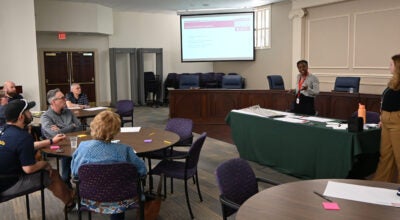Local schools have accounts to help students pay for lunch
Published 12:02 am Friday, August 19, 2022
SALISBURY — Federal waivers that let every public school district in the country feed students for free expired in June, but other help is available.
The waivers let school nutrition departments be reimbursed for feeding students for free, stretching from the summer of 2020 through June when they were allowed to expire by Congress.
Locally, 10 Rowan-Salisbury schools have special community waivers that mean meals are free, but the rest are back to a model where students who do not qualify for free or reduced lunch have to pay.
Last year, the district adopted a breakfast program that still allows it to feed every kid for free in the morning.
Those who do not qualify for assistance still have to pay for lunch, but the schools maintain accounts that help keep students from racking up meal debt.
School Nutrition Director Lisa Altmann said the accounts have been dormant for two years, but they predate the COVID-19 pandemic. They were set up in a few schools, then people started to support the effort and they spread throughout the district.
In January of 2020, a private donation was made to pay off all $14,000 in student meal debt at the time.
Now the pandemic-era waivers are gone, software has changed and the district was also hit by a cyber attack in late 2021 that caused some internal issues, but Altmann said the district is now getting the accounts back up and running.
So how does it work?
Families have to fill out an application to qualify for free or reduced lunch. There are some automatic qualifiers like receiving food stamps or Medicaid assistance. Altmann said the applications have been flowing in since the waivers expired.
The state also set aside some funding to cover the difference between free and reduced lunch, so fewer families have to pay.
The nutrition department is organized as its own enterprise and is reimbursed directly by the U.S. Department of Agriculture.
For everyone else, including those who may qualify for assistance but have not turned in an application yet, they have to pay.
The district has a policy that students without free or reduced lunch can charge three meals, which turns into meal debt the nutrition department tries to collect, though Altmann said that often is not possible.
The district won’t deny a student a meal, even after those three are charged and the school counts it as an “alternative meal” the district does not get reimbursement for. Altmann said ultimately the district has to cover uncollected debt and alternative meal costs.
She has been clear since the pandemic began she believes universal free meals should be part of a child’s education and pushed for the federal waivers to keep running.
“It’s just never a child’s fault,” Altmann said.
As of Wednesday, just over a week into the school year, the district has recorded more than $4,500 in meal debt.
Altmann said when a student reaches their charge limit and has to get the alternative meal option the school will try to find out if there is something happening at home and the principal can advocate for that student by submitting an application by writing a statement for an emergency application.
That goes to Altmann, who can get a child approved for meal assistance in that situation.
Altmann said she expects the amount of debt to slow as families realize meals are no longer universal.
An update on school meals has been placed on the district school board’s Monday agenda.
For people interested in contributing to a school meal account, they should get in touch with the individual school.






